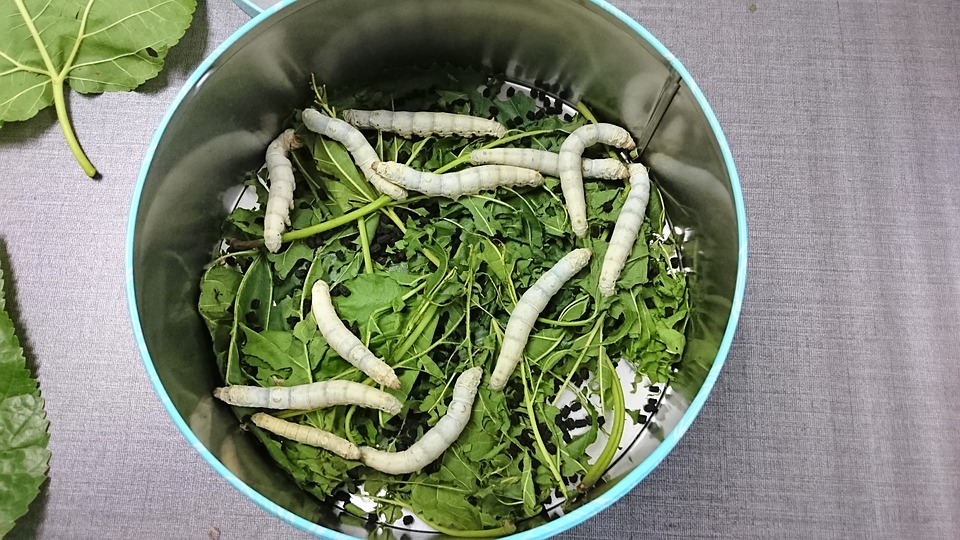Blog
The Top 5 Benefits of Raising Silkworms in Your Classroom
Are you a teacher considering bringing silkworms into your classroom?
Growing silkworms in classrooms can be a wonderful opportunity to teach your students a wide range of life skills through interaction with living creatures. Silkworms in the classroom can be a great tool to teach children about the life cycle, insect behaviour and anatomy, and how to care and interact with living creatures.
Pets Promote a Nurturing Attitude
Silkworms can help show children that their love and care for the insects can help them grow and thrive. These nurturing connections teach children that using kindness and care can benefit those around them, establishing empathy and compassion.
Establishing this understanding and mindset within your students can improve their social skills. This included both the students who show bullying tendencies, as well as the ones who are shy and may struggle with connecting with their peers.
This is backed up by the natural therapy professionals at Proactiv Health, who find that animal interaction “teaches children humanity and care for the natural environment. Instilling a love for animals and nature from a young age will mean that they will grow up with a solid respect and care for the world around them, as well as empathy and care for other human beings”.
Silkworms Provide New Ways of Learning
Silkworms can be an engaging way to approach the topics you are already teaching within your classroom. Mathematics (how much does a silkworm weigh, how about 30?), science (looking into the life cycle and diet of a silkworm), social science (the evolution of the use of silkworms) , or even grammar (what adjectives can be used to describe a cocoon?) can be taught through silkworms. They also have the potential to make it more fun to learn any subject.
Students will enjoy a new way of learning such subjects, and they will delve into them with added interest and excitement. They could even present their learning to other students in the school, or use technology to create slideshow and ebooks about their new pets.
Silkworms Can Boost Self-Esteem
Children get a sense of pride and accomplishment when they take care of silkworms. Seeing the silkworms grow, thrive, and transform only increases the students’ bonds and care for the worms moving forward. Slowly, children will want to start taking on more responsibilities such as feeding the worms.
The child development experts at Thinking Families recommend to “reinforce to the children how their nurturing and care has helped the worms grow. Witnessing and being validated for their silkworms’ success will instill pride and confidence in the children. Letting them know that their accomplishments are valued by you and the worms will boost their self-esteem.”
Silkworms Teach Responsibility
Raising silkworms from eggs all the way to when they become moths takes a lot of responsibility and care. By entrusting your students to care for the worms, it can help them learn about catering to the needs of others, particularly those weaker and more fragile than themselves.
It is likely that your students will become very protective of the worms as they build bonds with them through caring. With silkworm care being carefully monitored by the teacher, classroom silkworms can be an excellent opportunity for the growth of responsibility within your students.
Silkworms Lead to an Enriched Classroom Experience
Exposing your students to silkworms will allow them to feel, see, touch, and make connections to the animal world. This is especially important for the children that have little exposure to nature or animals in their homes. Observing and caring for silkworms helps instil a sense of responsibility as well as a respect for all life.
They will also bring a new dimension to the classroom and improve their children’s overall experience at school. This is reinforced by life balance specialist, Joanne Antoun, who finds that “exposing children to nature is especially important in today’s classrooms which are often heavily tech driven. Silkworms will engage children away from their screens, and give them something positive to focus on.”
In conclusion…
Having silkworms as classroom pets helps bring increased awareness and sensitivity to the needs and feelings of others – both humans and animals.
Children learn that all living things require more than just water and food to survive and will see directly how their actions and behaviour affect others. Learning how to care for silkworms help students learn both academically and socially and can really make a significant difference to your classroom.

